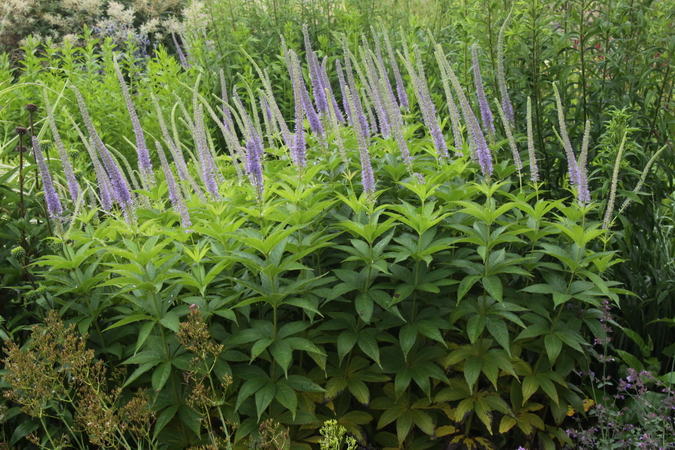Eutrochium purpureum (Sweet Joe Pye Weed). A prairie native grossstauden. Photo credits to Craig Cramer.
I stumbled upon this interesting blog post by Noel Kingsbury on Grossstauden, which is the German word for 'tall perennials'.
Why don't we see tall perennials (5 feet tall and higher) used more often in the landscape? It would seem this is a severely underutilized plant material palette. True, they suffer from the bad reputation of flopping over--but do they all flop? And why do they flop?
Of the three types of Grossstauden--tall herb flora, prairie plants, and forbs, mostly tall herb flora are to blame for flopping.
As for these capricious floppers, Kingsbury suggests several factors could be at play:
1. Some Grossstauden can get fat. Apparently many of these plants hail form tightly overcrowded communities, and are accustomed to only consuming enough nutrients to survive. When planted on a nurturing, non-competitive garden bed, they over-eat and flop over. Sounds like me on Sundays!
2. Some Grossstauden use crutches. In some cases large colonies of tall perennials effectively lean on one another, providing additional lateral support. These plants haven't had an evolutionary needed to accumulate lignin deposits. In landscaping conditions, they tend to be planted as single specimens or in small numbers. All it takes is a strong breeze and flop! (Also like me on windy days).
Yet some Grossstauden, such as Joe-Pye Weed, don't require supports at all. As they mature, they develop a unique root system that provides lateral support and keeps them upright.
“The eupatorium and vernonia involve hacking your way through a massive radial root system - which takes a few years to build up, and is clearly a solution to how to stop 3m high plants from falling over. It is quite unlike anything you will find in any other perennial. Impressive engineering. ”
The use of these plants as part of the garden structure is something that intrigues me. Can you imagine tall hedges made of herb flora? It would not be unlike the use of tall grasses to replace woodies for structural interest. And nothing could be more appropriate in an Iowa prairie garden.
Perhaps once we gain a better understanding of how these plant communities grow in their natural environment, we may better implement them in our designs.






